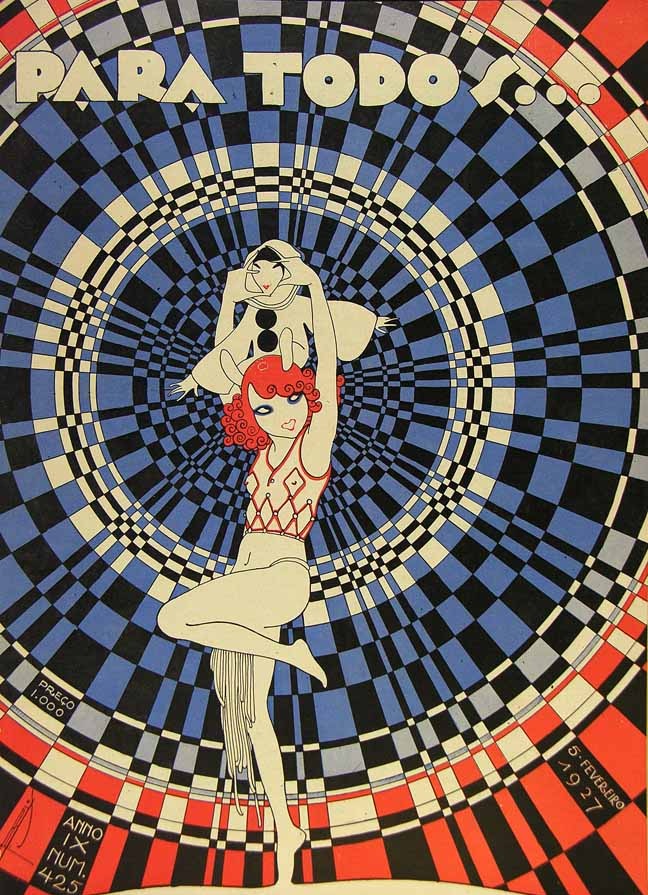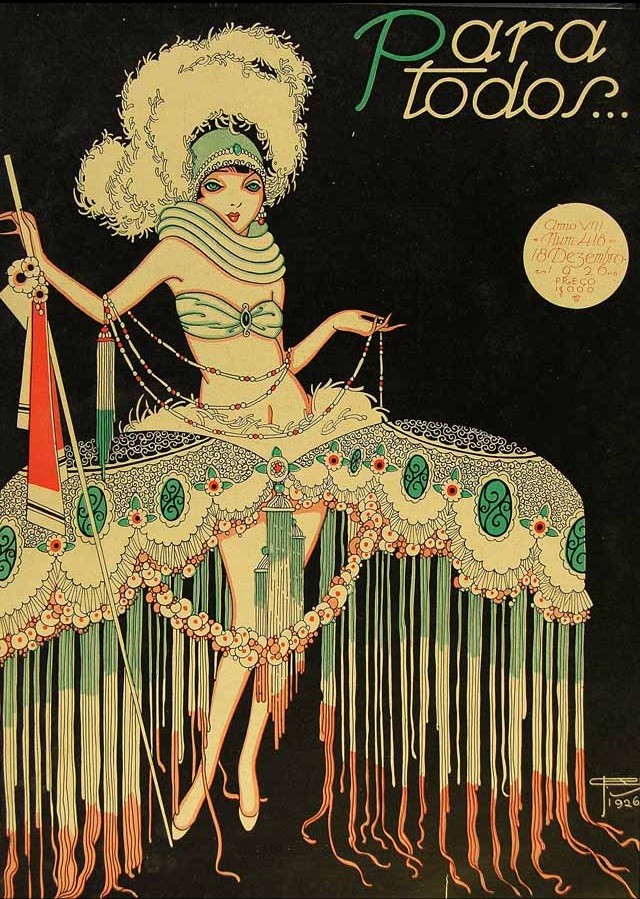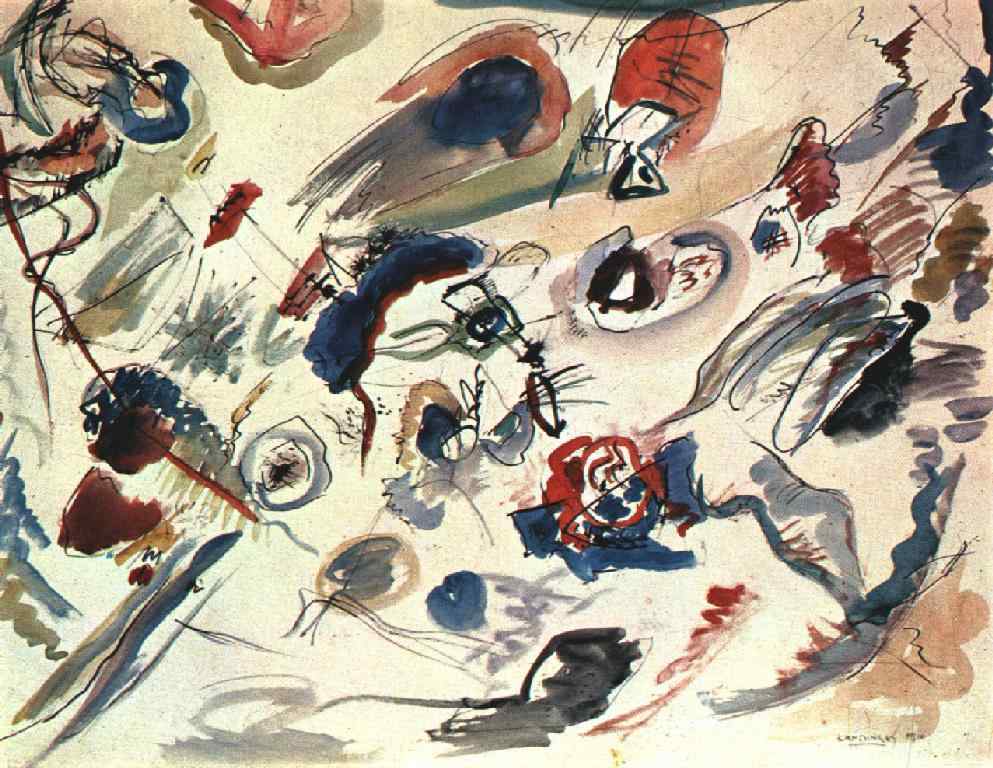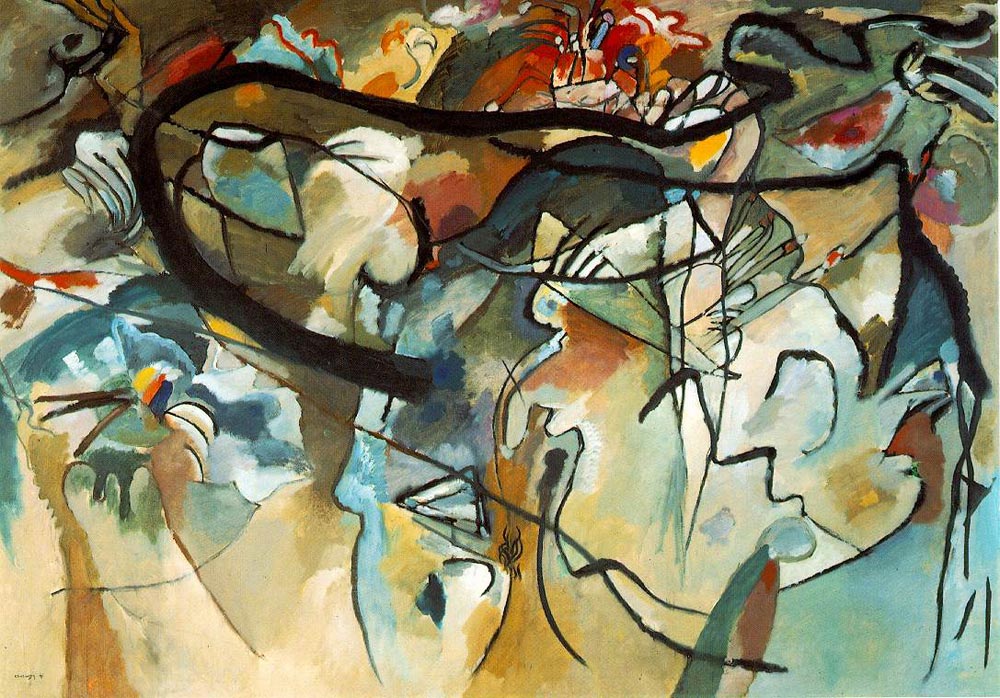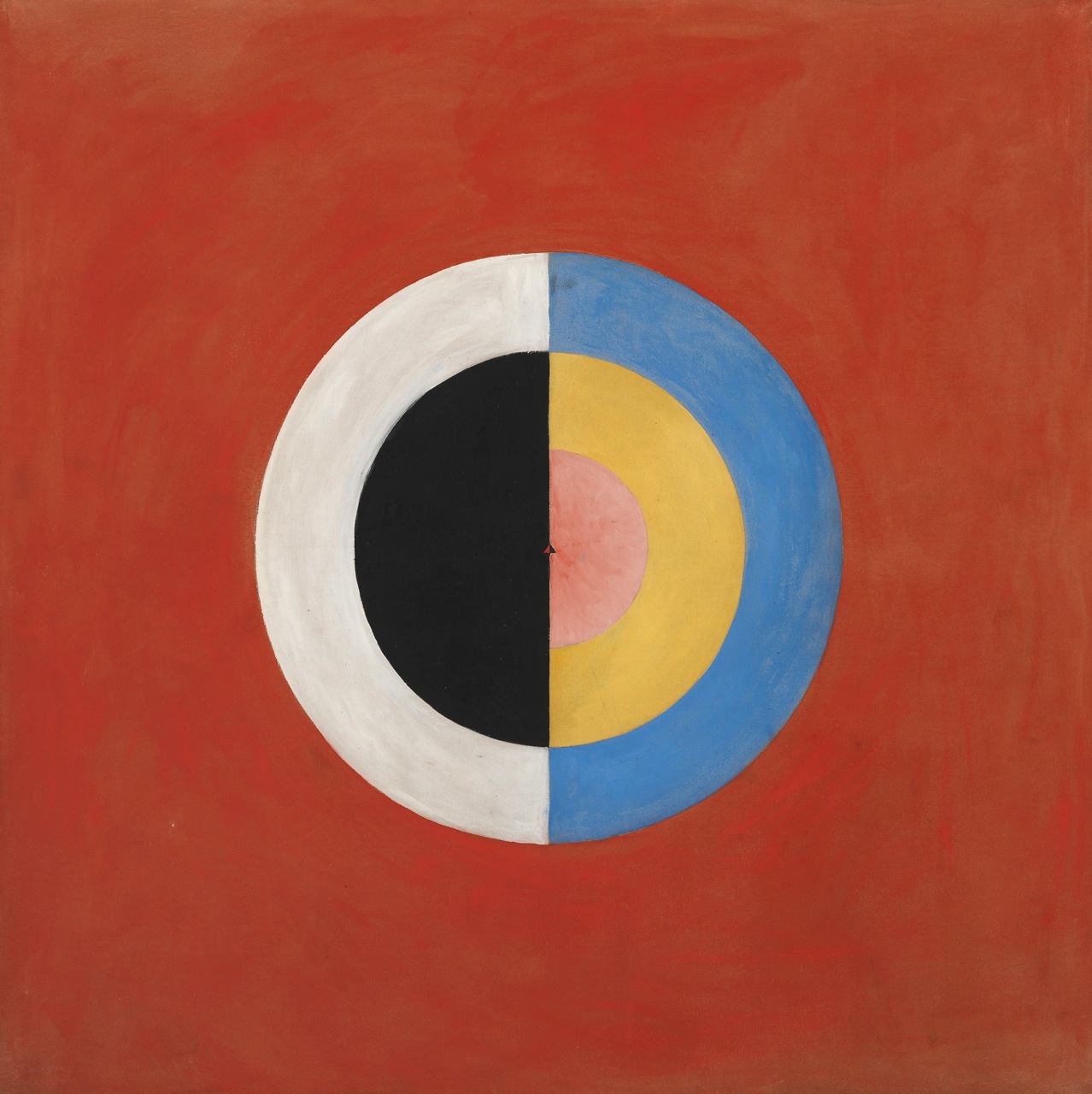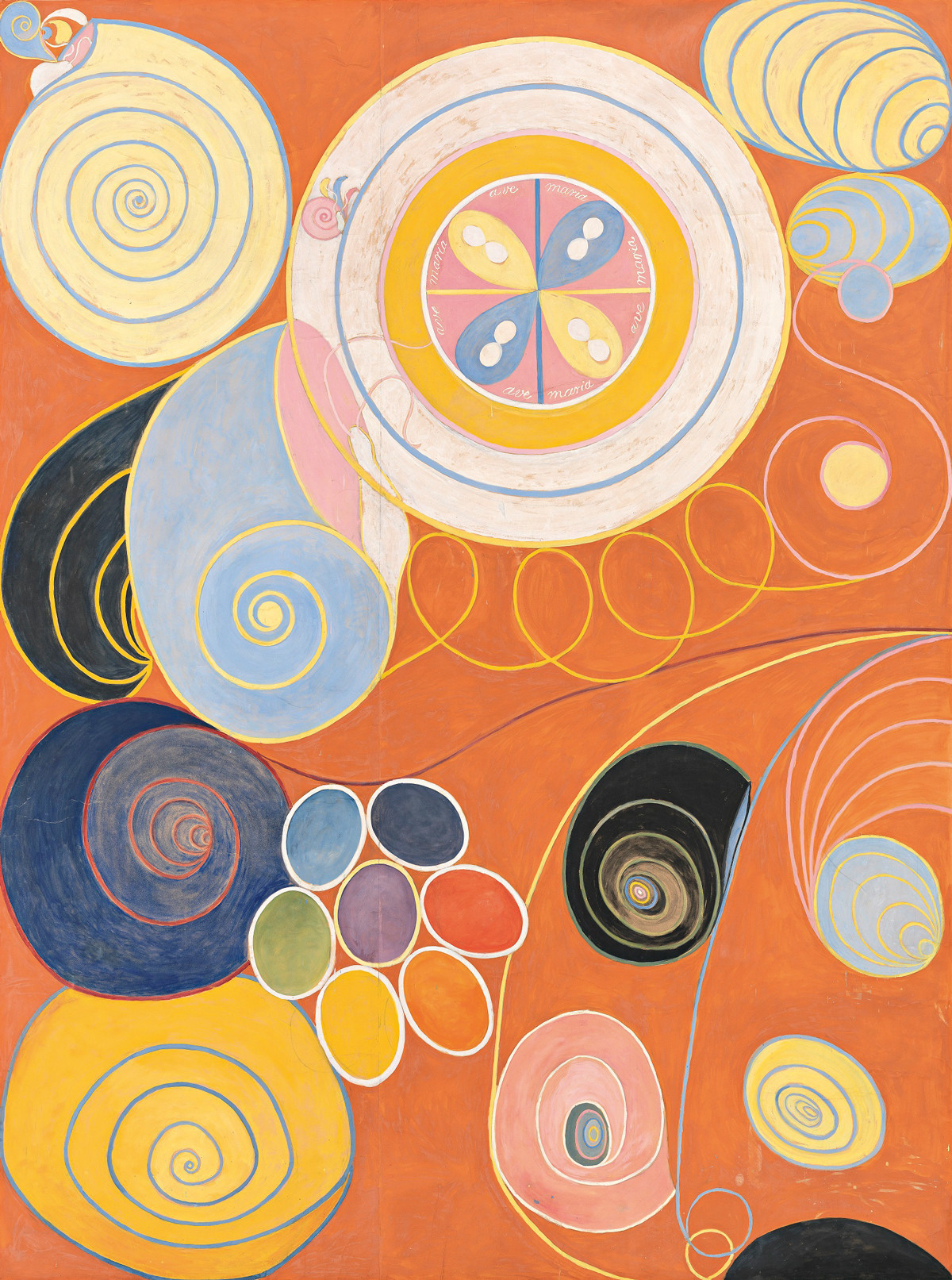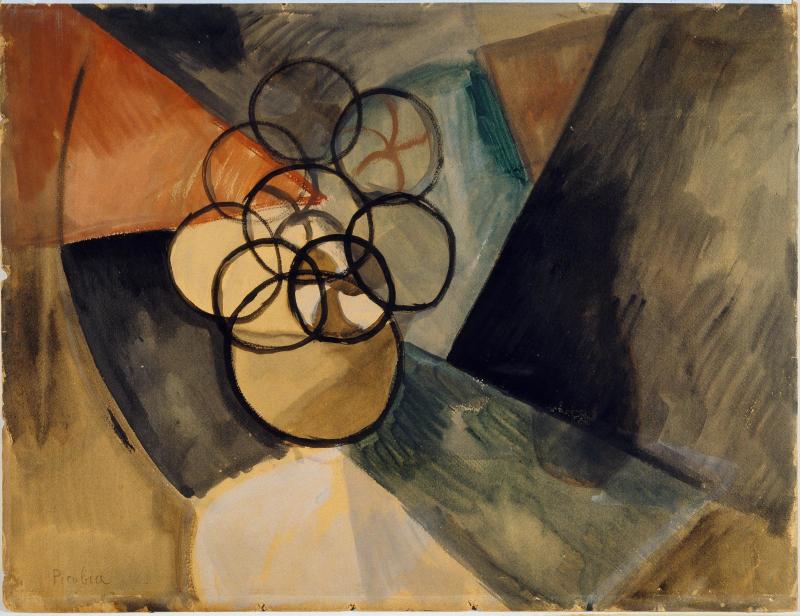[Most Recent Entries] [Calendar View]
Thursday, September 14th, 2017
| Time | Event |
| 11:00a | Behold the Beautiful Designs of Brazil’s 1920s Art Deco Magazine, Para Todos
Art Nouveau, Art Deco… these are terms we associate not only with a particular period in history—the turn of the 20th century and the ensuing jazz-age of the 20s—but also with particular locales: Paris, New York, L.A., London, Vienna, or the Jugendstil of Weimar Munich. We probably do not think of Rio de Janeiro. This may be due to biases about the privileged location of culture, such that most people in Europe and North America, even those with an arts education, know very little about art from “the colonies.”
But it is also the case that Brazil had its own modern art movement, one that strove for a distinctly Brazilian sensibility even as it remained in dialogue with Europe and the U.S. The movement announced itself in 1922, the centennial of the South American nation’s independence from Portugal. In celebration, artists from São Paulo held the Semana de Arte Moderna, seven days in which, the BBC writes, they “constructed, deconstructed, performed, sculpted, gave lectures, read poetry and created some of the most avant-garde works ever seen in Brazil.”
1922 also happened to be the year that a Rio de Janeiro-born artist, illustrator, and graphic designer who went by the name J. Carlos (José Carlos de Brito e Cunha) took over the direction of the magazine Para Todos. Founded in 1918, the magazine began as a film rag, and its covers faithfully featured photo spreads of movie stars. But in 1926, Carlos, who had already proven himself a “major talent in Brazilian Art Deco graphic design,” writes Messy Nessy, began drawing his own cover illustrations, and he continued to do so for the next four years, as well as drawing thousands of cartoons and writing vaudeville plays and samba lyrics.
His work clearly draws from Euro-American sources, including several unfortunate racial caricatures. But it also introduces some uniquely Brazilian elements, or uniquely Carlos-ian elements, that seem almost proto-psychedelic (we might imagine a jazz-age Os Mutantes accompanying these trippy designs). J. Carlos was a prolific artist who “collaborated in design and illustration in all the major publications of Brazil from the 1920s until the 1950s.” In all, it’s estimated that he left behind over 100,000 illustrations. So devoted was Carlos to the art and culture of his native city that he apparently turned down an invitation by Walt Disney to work in Hollywood.
Print magazine describes Carlos’ work as “a cross between Aubrey Beardsley and John Held Jr.,” and while there is no shortage of the willowy, doll-like flappers, elongated, elfin figures, and intricate, spidery patterns we would expect from this derivation, Carlos is also doing something very different from either of those artists—or really from anyone working in the Northern Hemisphere. He has since become a heroic figure for Brazilian artists and scholars, inspiring an extensive web project, a visual thesis on Issuu, and two recent documentary films (all in Portuguese), which you can find here.
In 2009, Carlos received a posthumous honor that probably would have thrilled him in life, a tribute song by the Académicos da Rocinha samba club. Listen to it here and find several more of Carlos’ Para Todos covers at Messy Nessy, Print, and the Brazilian blog Os caminhos do Journalismo. Related Content: Download Hundreds of Issues of Jugend, Germany’s Pioneering Art Nouveau Magazine (1896-1940) Oscar Wilde’s Play Salome Illustrated by Aubrey Beardsley in a Striking Modern Aesthetic (1894) Harry Clarke’s 1926 Illustrations of Goethe’s Faust: Art That Inspired the Psychedelic 60s Josh Jones is a writer and musician based in Durham, NC. Follow him at @jdmagness Behold the Beautiful Designs of Brazil’s 1920s Art Deco Magazine, Para Todos is a post from: Open Culture. Follow us on Facebook, Twitter, and Google Plus, or get our Daily Email. And don't miss our big collections of Free Online Courses, Free Online Movies, Free eBooks, Free Audio Books, Free Foreign Language Lessons, and MOOCs. |
| 2:00p | Watch a Musician Improvise on a 500-Year-Old Music Instrument, The Carillon Last year we featured the Wintergatan Music Machine, a lovingly handcrafted in wood automated instrument created by artist/musician Martin Mollin. Over 2,000 marbles travel through a complex series of gears, cranks, and tubes, eventually striking notes on a xylophone and creating beats on two closely mic’d pads to make bass and snare drum sounds. There’s more layers to follow in the video, and it’s all been programed by Mollin. His video earned over 55 million views on Youtube. What inspired the Wintergatan Music Machine?The collection of old automata at the Speelklok Museum, where Mollin's machine now resides. In an interview, he told Wired:
Which leads to today’s video, where Mollin gets to improvise on the machine that inspired him to make his own: a 500-year-old carillon. This carillon uses a programmable wheel (or “repinnable musical drum” as it is officially called), which allowed melodies to be played on church bells. Those patterns are set on the drum by a series of movable stops, but this carillon also has a second set of keys that are arranged like a piano, and must be played with a fist. Mollin has a go, and improvises a melody near the end. Mollin also hosts “Music Machine Mondays” on his YouTube channel, where he explores more of the museum’s collection of automata, like this insane Self-Playing Orchestra with 17 Instruments (above). If you are into some pre-transistor coolness, before steam or punk was even a thing, do check it out. Related content: Hear a 9,000 Year Old Flute—the World’s Oldest Playable Instrument—Get Played Again Behold the Sea Organ: The Massive Experimental Musical Instrument That Makes Music with the Sea Ted Mills is a freelance writer on the arts who currently hosts the FunkZone Podcast. You can also follow him on Twitter at @tedmills, read his other arts writing at tedmills.com and/or watch his films here. Watch a Musician Improvise on a 500-Year-Old Music Instrument, The Carillon is a post from: Open Culture. Follow us on Facebook, Twitter, and Google Plus, or get our Daily Email. And don't miss our big collections of Free Online Courses, Free Online Movies, Free eBooks, Free Audio Books, Free Foreign Language Lessons, and MOOCs. |
| 5:59p | The Velvet Underground Meets Lawrence Welk The worlds of the Velvet Underground and Lawrence Welk are pretty far apart. On the one side, you have a gritty New York band city writing lyrics about shooting up heroin. On the other, a bandleader whose "champagne music" charmed TV viewers across Middle America for 27 straight years. And yet. And yet. In this 2007 YouTube classic, director/producer Darren Hacker found a way to cross the chasm, mashing up VU's 1968 song "Sister Ray" with footage from the Lawrence Welk Show. As he explained to Dangerous Minds, “I rigged up 2 ancient VCRs and a CD player across my living room floor, layed down on my stomach, cued everything up and then manually activated all 3 devices at precise intervals, live…in real time. One take, no edits…” Everything lined up, just like that. Enjoy "Lawrence Welk Meets Velvet Underground" and imagine a moment when, circa 1968, VU went mainstream on the milquetoast Lawrence Welk Show. Related Content: An Animation of The Velvet Underground’s “Sunday Morning” … for Your Sunday Morning A Symphony of Sound (1966): Velvet Underground Improvises, Warhol Films It, Until the Cops Turn Up Hear Lost Acetate Versions of Songs from The Velvet Underground & Nico (1966) The Velvet Underground Meets Lawrence Welk is a post from: Open Culture. Follow us on Facebook, Twitter, and Google Plus, or get our Daily Email. And don't miss our big collections of Free Online Courses, Free Online Movies, Free eBooks, Free Audio Books, Free Foreign Language Lessons, and MOOCs. |
| 6:57p | Free Courses on Design from the Famous California Design Firm IDEO Start This Week
A quick fyi: This week, the famous California design firm IDEO has launched two free courses--a 7-week Introduction to Human-Centered Design and a 4-week course on Prototyping. As you might recall, we recently featured A Crash Course in Design Thinking from Stanford’s Design School. If that piqued your interest in design and design thinking, then IDEO's courses might hold appeal. You can enroll in both courses, at no cost, today. More free courses can be found in our collection, 1,250 Free Online Courses from Top Universities. Follow Open Culture on Facebook and Twitter and share intelligent media with your friends. Or better yet, sign up for our daily email and get a daily dose of Open Culture in your inbox. If you'd like to support Open Culture and our mission, please consider making a donation to our site. It's hard to rely 100% on ads, and your contributions will help us provide the best free cultural and educational materials. Related Content: Download 20 Free eBooks on Design from O’Reilly Media Saul Bass’ Advice for Designers: Make Something Beautiful and Don’t Worry About the Money Bauhaus, Modernism & Other Design Movements Explained by New Animated Video Series Abstract: Netflix’s New Documentary Series About “the Art of Design” Premieres Today Free Courses on Design from the Famous California Design Firm IDEO Start This Week is a post from: Open Culture. Follow us on Facebook, Twitter, and Google Plus, or get our Daily Email. And don't miss our big collections of Free Online Courses, Free Online Movies, Free eBooks, Free Audio Books, Free Foreign Language Lessons, and MOOCs. |
| 8:00p | Who Painted the First Abstract Painting?: Wassily Kandinsky? Hilma af Klint? Or Another Contender?
Kandinsky, Untitled, 1910 Many painters today concentrate on producing abstract work — and a fair few of those have only ever produced abstract work. But look not so very far back in human history, and you'll find that to paint meant to paint representatively, to replicate on canvas the likenesses of the actual people, places, and things out there in the world. Humanity, of course didn't evolve with its representational art skills pre-installed: though some cave paintings do recognizably depict men and beasts, many strike us today as what we would call abstract, or at least abstracted. So which modern artists can lay claim to having rediscovered abstraction first?
Kandinsky, Composition V, 1911 If you've studied any art history, you might well name the early 20th-century Russian painter Wassily Kandinsky (whose first abstract watercolor from 1910 appears at the top of the post). But "while Kandinsky is today hailed as the father of abstract painting," writes Artsy's Abigail Cain, "he was by no means the only player in the development of non-representational painting," though "his work Komposition V did, admittedly, jumpstart public interest in abstract painting." First exhibited in Munich in December 1911, "this monumental work was just barely representational" and also "the first such work to be put on display," inspiring the art world not just to take abstraction seriously but to see it as the future.
Hilma af Klint, Svanen, 1915 Kandinsky, inspired by Goethe's Theory of Colors, had already given the subject of abstraction no small amount of thought. He'd first written a manifesto defining abstract art a few years earlier, titling it On the Spiritual in Art, a title that would have resonated with Hilma af Klint, a painter who might have actually gone abstract first. "Af Klint, who was born in Stockholm, showed an early interest in nature, mathematics and art, and she began studying at the Royal Swedish Academy of Fine Arts in 1882," writes the New York Times' Natalia Rachlin. She made her name as a landscape and portrait painter after graduation, but at the same time "also continued a more private pursuit: she had begun showing an interest in the occult and attending séances as early as 1879, at the age of 17."
Hilma af Klint, ‘Staggering’: The Ten Largest, Youth, 1907. Af Klint's "curiosity about the spiritual realm soon developed into a lifelong interest in spiritism, theosophy and anthroposophy," and during one séance she heard a spirit tell her to "make paintings that would represent the immortal aspects of man. This proved to be the turning point in af Klint’s work: from the naturalistic to the abstract, from portrayals of physical reality to conveying the invisible." She went on to produce the 193 abstract Paintings for the Temple. The exhibitions of her representational work continued, but she kept the rest private, and in her will "even asked that her abstract paintings not be shown in public until at least twenty years after her death, noting that audiences were not yet capable of understanding her work."
Francis Picabia, Caoutchouc, 1909. Both Kandinsky and Af Klint look like plausible candidates for the first abstract painter — it just depends on how you define the beginning of abstraction — but they're hardly the only ones. Cain also brings up the Czech-born, Paris-based artist František Kupka, or his colleague in the French avant-garde Francis Picabia, whose 1909 watercolor Caoutchouc (Rubber), pictured just above, came before Kandinsky had painted an abstract image or even completed any writing on the subject. Still, some objectors note that "the work still retains some semblance of form, reminiscent of a bouquet of flowers." These questions of purity, innovation, and especially originality do get complicated. As Clive James once said, "It's very hard to be totally inventive, so I'm not terribly interested in originality. Vitality is all I care about" — a quality that all these works exude still today. Related Content: Time Travel Back to 1926 and Watch Wassily Kandinsky Make Art in Some Rare Vintage Video The MoMA Teaches You How to Paint Like Pollock, Rothko, de Kooning & Other Abstract Painters Free Course: An Introduction to the Art of the Italian Renaissance Based in Seoul, Colin Marshall writes and broadcasts on cities and culture. He’s at work on the book The Stateless City: a Walk through 21st-Century Los Angeles, the video series The City in Cinema, the crowdfunded journalism project Where Is the City of the Future?, and the Los Angeles Review of Books’ Korea Blog. Follow him on Twitter at @colinmarshall or on Facebook. Who Painted the First Abstract Painting?: Wassily Kandinsky? Hilma af Klint? Or Another Contender? is a post from: Open Culture. Follow us on Facebook, Twitter, and Google Plus, or get our Daily Email. And don't miss our big collections of Free Online Courses, Free Online Movies, Free eBooks, Free Audio Books, Free Foreign Language Lessons, and MOOCs. |
| << Previous Day |
2017/09/14 [Calendar] |
Next Day >> |
